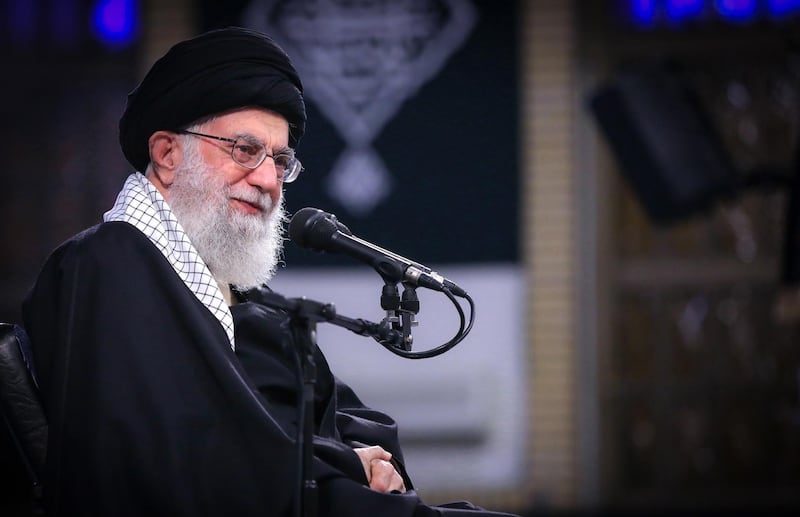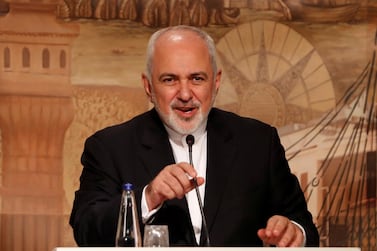It is a subject that perturbs Iran's inner circle and is all but forbidden in public discourse. Who will take over when Supreme Leader Ayatollah Ali Khamenei dies?
The uncertainty is magnified by an unusual contrast; Iran's theocratic system is only 40 years old but most of its revolutionary leaders are nearing the end of their lives. Only Mr Khamenei and Ayatollah Ruhollah Khomeini, the founder of the Islamic republic, who died in 1989, have held the top job. The current supreme leader was president of Iran when Khomeini died but many were surprised by his elevation. He was 49 at the time and other clerics were more senior. As president, however, Mr Khamenei had been prominent during the Iran-Iraq War, had a significant public profile and was considered a hardliner of the revolution, a qualification Khomeini had insisted on to ensure continuity of the regime.
But having occupied the position for three times as long as his predecessor Mr Khamenei will turn 80 in July. He underwent prostate surgery in 2014, an operation that some intelligence agencies said was to remove cancerous cells. His health has been the subject of speculation ever since a lengthy absence in 2007 but it does not appear to have hobbled him. He frequently speaks in public for two hours at a time, a task doctors say an ailing individual would struggle with.
Mr Khamenei is head of state, commander-in-chief of the armed forces, appoints the heads of the judiciary and the state broadcaster, and picks half of the officials who decide who can stand in elections. Most crucially, he has the final word on all significant matters of state, domestic and international, with his influence vastly outweighing that of a president or parliament.
As in 1989, the next succession will be handled by Iran's top clerical committee. Known as the Assembly of Experts, it has powers under the constitution to appoint, monitor and sack a supreme leader, if necessary. An all-male group of 88 ayatollahs, it includes the current president of Iran, Hassan Rouhani, who has been tipped as a possible supreme leader.
Mr Rouhani's chances would likely be highest if he was still in office when Mr Khamenei dies. This is partly because the 70-year-old president, whose second term is due to end in 2021, would be one of three people with authority to administer the affairs of the supreme leader before a final successor is chosen. The other two are the head of Iran's judiciary and a member of the Guardian Council, another committee of powerful clerics responsible for interpreting and enforcing Iran's constitution.
In Mr Rouhani's favour are his cordial relations with moderate and pragmatic clerics. However he is less popular with the nation's more conservative hardliners, who retain a lot of power in the Assembly of Experts. Mr Rouhani also lost his top ally on the Assembly with the death two years ago of Ayatollah Akbar Hashemi Rafsanjani, president of Iran between 1989 and 1997. He was one of Khomeini's closest aides and had been a rival of Mr Khamenei for supreme leader last time round. As Mr Rouhani's mentor Mr Rafsanjani could have pushed clerics on the Assembly toward the current president.
One of the defining features of Mr Khamenei's leadership has been his ability to divide and rule. In 2016 for example, when the members of the Assembly were last chosen from a pre-screened list in elections, he chose a hardline loyalist of his, Ayatollah Ahmad Jannati, as chairman. This was seen in Iran as a countermeasure to weaken the hand of the more moderate faction favoured by Mr Rouhani, whose allies had picked up seats, and blunt the reforms they wanted.
Several positions on the Assembly of Experts are vacant because of recent deaths, including of Ayatollah Mahmoud Hashemi Shahroudi. He had been considered a strong candidate for the top job as he had broad support as well as a strong relationship with Mr Khamenei.
But Shahroudi's sudden death from cancer in December highlighted a gap between the clerics and the general population, more than 60 per cent of which was born after the revolution. Many believe someone closer to the age, interests and demands of the country's youth, rather than a septuagenarian or octogenarian, is what is needed.
At the moment, hardliners do not have a standout candidate for supreme leader. Their most prominent clerics, including Ayatollah Ebrahim Raisi, who controls Astan Quds Razavi, the country's wealthiest religious foundation based in the holy city of Mashhad, have failed to win public support in recent elections, considered an important test of acceptability for the top job. As such, rivals are vying for influence. The eventual death of Mr Khamenei will prompt internal debate on Iran's future direction and open a defining battle between reformists and hardliners.
Arthur MacMillan, The National's chief diplomatic correspondent, was based in Tehran between 2014 and 2016






